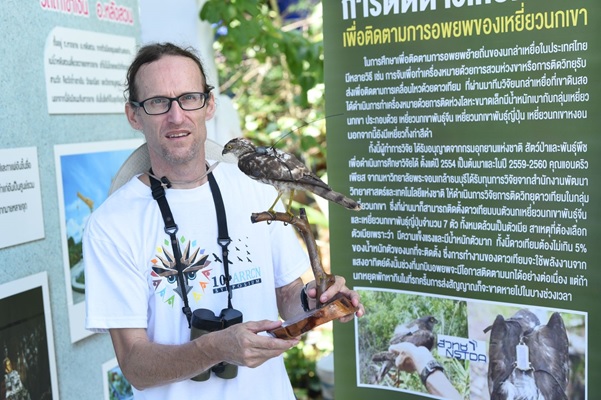Raptors are predators at the top of the food chain and therefore their presence serves as a barometer of ecological health. Several raptor species are, however, being threatened by habitat loss. Study of their habitats during breeding and wintering seasons, as well as migration path and stopover sites provides a useful insight for raptors’ conservation.

With the funding from NSTDA, a research team, led by Mr. Andrew J. Pierce of King Mongkut’s University of Technology (KMUTT) in collaboration with Mahidol University, the Bird Conservation Society of Thailand and the Flyway Foundation, embarked on the study of raptors’ flyway. Every winter, hundreds of thousands of raptors migrate from breeding grounds in Russia and China to wintering grounds in Southeast Asia from August to November. The study focuses on East Asian Continental Flyway, stretching from Siberia and China passing through the mainland of Southeast Asia to Malay Peninsular and the Indonesian Archipelago. The team based their study at Khao Dinsor (Dinsor Hill) in Chumphon Province – a well-known site to observe migratory raptors.

Four Chinese Sparrowhawks (Accipiter soloensis) and four Japanese Sparrowhawks (Accipiter gularis) were captured at Khao Dinsor and tagged with solar-powered satellite tracking devices between 2016 and 2017 before releasing to the wild. The study revealed the wintering grounds of Chinese Sparrowhawks to be Sumatra, East Nusa Tenggara and Timor-Leste where they stay for 70-80 days before returning to their breeding ground in Southern China around February to May. The Japanese Sparrowhawks, on the other hand, spend 130-170 days at their wintering sites in Sumatra and Borneo, before returning to their breeding ground in Amur Oblast in Eastern Russia. In addition to discovering wintering grounds of these two types of hawks, the investigation also identified major stopover sites that have been transformed from forest to agricultural lands.

Covering the 2000 rai (790 acres) of lush forest, Khao Dinsor is considered one of the best spots to watch migratory raptors. The site records 38 raptor species passing through, including Japanese Sparrowhawk (mid-August), Chinese Sparrowhawk and Oriental Honey-buzzard (late September to early October) and Black Baza (late October). Khao Dinsor also provides exceptional views of six sparrowhawk species—the highest number of such species recorded at any raptor watch site in the world. Since 2002, the Chumphon administrative office in partnerships with public and private organizations, organizes Chumphon Raptor Watch annually to promote Khao Dinsor as a premier site to observe migratory raptors. The work of these research team will greatly contribute to the conservation of raptors and promote Thailand’s eco-tourism.

